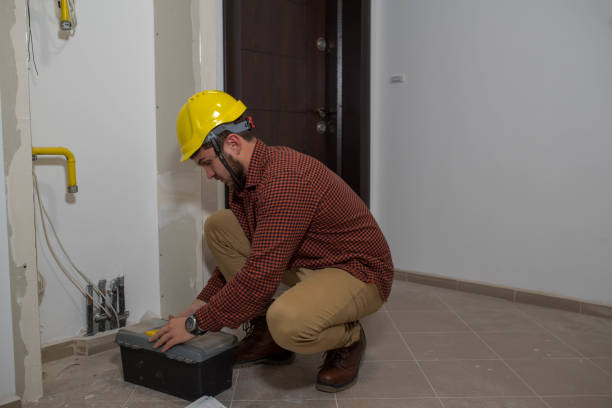Gas line installations are essential for delivering energy to both residential and commercial properties, ensuring that heating, cooking, and various industrial applications run seamlessly. However, extreme weather conditions can pose significant challenges to gas line installation services. In this article, we will explore the effects of different climatic extremes on gas line installations, highlighting the strategies employed by professional services to mitigate these impacts.
The Challenges of Extreme Cold
Extreme cold climates are notorious for their impact on gas line installations. When temperatures drop significantly, the ground can freeze, leading to the expansion and contraction of the soil. This freeze-thaw cycle subjects gas lines to stress, causing potential cracks and leaks. Additionally, the materials used in gas lines may become more brittle in low temperatures, increasing the risk of damage. Gas line installation services tackle these challenges by using materials that maintain flexibility at low temperatures and by burying gas lines below the frost line to reduce ground movement effects.
Navigating Extreme Heat
On the flip side, extreme heat can also adversely affect gas line installations. High temperatures cause materials to expand, which can lead to distortions or leaks in the gas lines. Furthermore, the scorching heat can dry out the soil, causing it to shift or settle differently. This soil movement can place additional stress on buried gas lines. Gas line installation addresses these issues by selecting materials that can withstand high temperatures without deforming and by regularly monitoring soil conditions around the gas lines to ensure stability.
The Threat of Hurricanes and Tropical Storms
Hurricanes and tropical storms bring a combination of heavy rainfall, strong winds, and flooding, all of which can significantly impact gas line installations. Flooding can lead to soil erosion, exposing and damaging buried gas lines. Strong winds can cause trees and debris to hit above-ground gas infrastructure, causing further damage. Professional gas installation services mitigate these risks by using reinforced materials and strategically placing gas lines to shield them from storm damage. Comprehensive inspections following significant storm events are also crucial to ensure the integrity of the gas lines.
Earthquakes and Seismic Activity
Seismic activity presents unique challenges for gas line installations. Earthquakes can shift the ground, resulting in breaks or leaks in gas lines. Gas line installation services in seismically active regions often employ gas lines designed to be flexible and resilient to ground movement. Techniques such as using special joints and flexible piping materials allow gas lines to move with the earth without breaking. Additionally, advanced monitoring systems can detect seismic activity and automatically shut off gas flow, preventing leaks or explosions.
Impact of Heavy Snow and Ice
Heavy snow and ice can create additional challenges for gas line installations, particularly for above-ground infrastructure. The weight of accumulated snow and ice can strain the gas lines and related equipment, potentially causing cracks or breaks. Ice buildup can block vents and valves, disrupting gas flow and creating safety hazards. Insulation and heating systems are often employed by gas line installations to keep gas lines and equipment free from snow and ice buildup, ensuring continuous and safe operation during winter months.
Adapting to Dry and Arid Climates
Dry and arid climates present their own set of challenges, such as soil erosion and shifting sands. Lack of moisture can cause the soil to become loose and unstable, jeopardizing the stability of buried gas lines. These services in these regions may use anchor systems to secure gas lines and choose corrosion-resistant materials to withstand harsh environments. Regular maintenance and monitoring are essential to identify and address any potential issues early on.
Utilizing Advanced Technology
Advances in technology play a crucial role in managing the impact of extreme climates on gas line installations. Geographic Information Systems (GIS) can map out areas prone to climatic extremes, allowing for better planning and placement of gas lines. Remote sensing and monitoring technologies provide real-time data on the condition of gas lines, enabling quick responses to detected anomalies.
The Importance of Comprehensive Planning and Maintenance
Comprehensive planning and regular maintenance are vital for ensuring the longevity and safety of gas line installations in extreme climates. Gas line installation must select appropriate materials and installation techniques, employ advanced technologies, and conduct regular inspections. Collaborating with engineers, climate scientists, and local authorities to integrate climate adaptation strategies into planning and execution processes further enhances the resilience of gas line infrastructure.
Conclusion
Extreme climates present a range of challenges to gas line installations, from the freeze-thaw cycles of cold regions to the soil instability of arid areas. Successfully navigating these difficulties requires innovative materials, advanced technology, and thorough planning and maintenance. By understanding and addressing the unique impacts of different climatic conditions, gas line installation services can ensure the safe and efficient operation of gas line infrastructure, providing reliable energy supplies to communities around the world.
